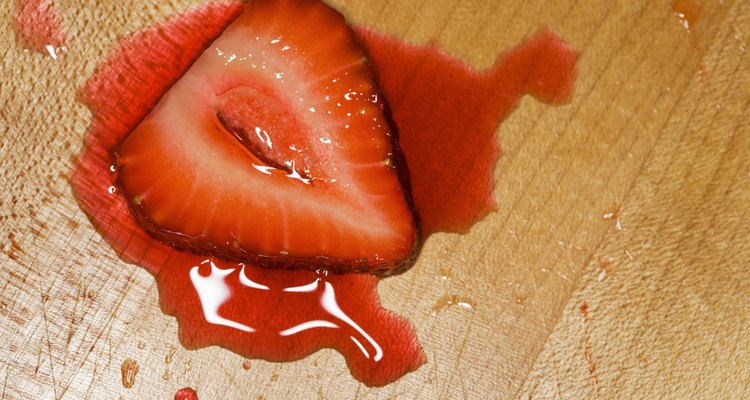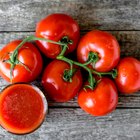
Siri Stafford/Lifesize/Getty Images
Fruit sugar, also known as fructose, accumulates naturally in a variety of plants, including apples, pears, cherries, agave, sweet potatoes, carrots, corn, wheat and sugar cane. Commercial manufacturers of fructose sweeteners have high-tech systems of extraction. The home cook, however, can employ simpler methods for pulling the natural sugars from plants. Use homemade fructose extract as a natural sweetener in a variety of drink, dessert and other food recipes.
Macerate the plant material to make pulp. Optional methods of macerating include finely mincing with a knife, grating and processing in a blender or food processor.
Pour the pulp into a glass container. Add an equal amount of tepid water to the container. Stir the pulp and water for several minutes with a metal stir stick.
Line a different glass container with a paper filter. Place the pulp and water mixture in the filter. Filter the juice into the second container. Squeeze the filter firmly.
Scrape the pulp from the filter, and mix it with more warm water, as you did previously. Filter the resulting juice in the same manner using a new paper filter. Repeat the process of extracting the juice from the pulp at least one more time.
Put the juice in a pot on a stove. Turn the stove burner on low-medium heat, and bring the juice to a simmer. Heat the juice for several minutes until its water portion cooks off and a syrup develops.
Related Articles

How to Make Carob Juice

How to Make Juice From Blueberries at ...

Ways to Make Tomato Juice Taste Better

What Is Agave Cactus Juice?

What Is the Freezing Point of Fruit ...

How to Cook Down Apple Juice to Make ...

How to Dye With Beet Juice

How to Make Liquid Sugar Concentrate

How to Thicken Raspberry Jam With ...

Best Fruit Juices to Cleanse the Colon

How to Boil Pandan to Make Juice

How to Freeze Raspberries

How to Eat a Quince

How to Dye Hair With Carrot Juice and ...

How to Make Chocolate Juice

How to Strain Seeds From Fruit When ...

Where to Buy Pomegranate Juice

How to Make Chokecherry Wine

How to Remove Seeds From Concord Grapes

The Difference Between Fruit Juice & ...
References
Writer Bio
Mason Howard is an artist and writer in Minneapolis. Howard's work has been published in the "Creative Quarterly Journal of Art & Design" and "New American Paintings." He has also written for art exhibition catalogs and publications. Howard's recent writing includes covering popular culture, home improvement, cooking, health and fitness. He received his Master of Fine Arts from the University of Minnesota.
Photo Credits
Siri Stafford/Lifesize/Getty Images